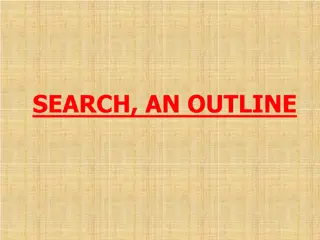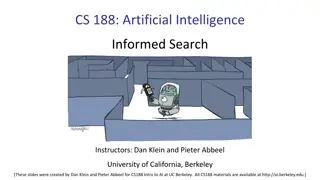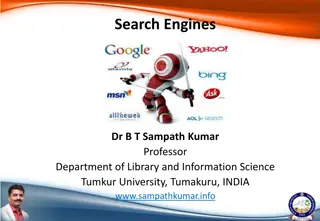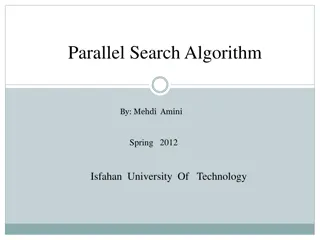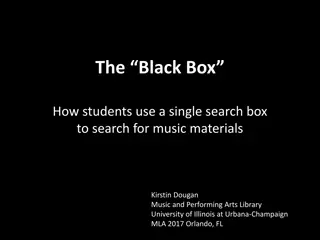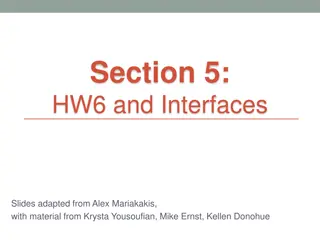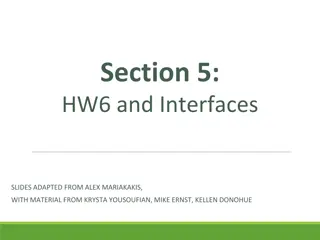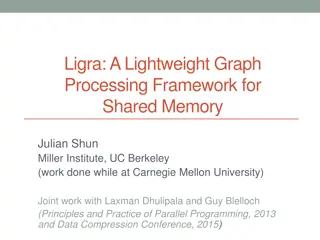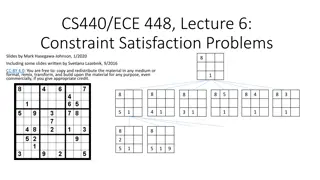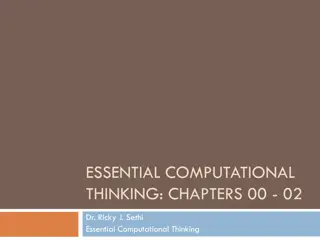Exploring Breadth First Search (BFS) in Computer Science
Discover how Computer Science utilizes algorithms like Breadth First Search (BFS) to solve problems efficiently, with a focus on navigating through mazes using queues to track explored locations systematically.
Download Presentation

Please find below an Image/Link to download the presentation.
The content on the website is provided AS IS for your information and personal use only. It may not be sold, licensed, or shared on other websites without obtaining consent from the author. Download presentation by click this link. If you encounter any issues during the download, it is possible that the publisher has removed the file from their server.
E N D
Presentation Transcript
Escaping a Corn Maze: as seen in the media Arup Guha dmarino@cs.ucf.edu 4/18/2015
Corn Mazes Real life set up where humans get to see what it s like to be a lab rat! At different junctures, choices can be made about what direction to go. Goal: to get out!!! http://abcnews.go.com/US/people-lost-worlds- biggest-corn-maze-called- 911/story?id=26868458
How can Computer Science help? Computer Scientists study algorithms. Algorithms are methods to solve problems. A common problem in many problem domains is systematically searching for an item in some search space. One algorithm used to search for locations, where pairs of locations are connected with roads (or dirt paths) is called breadth first search.
What is a breadth first search(BFS)? We are given a road map, a starting location and a desired destination. Our goal is to travel to each possible reachable location from our starting location, marking where we ve been. If we ever get to our destination, our search was a success!!!
Key Issues How do we determine if we ve been somewhere before? How do we determine which roads to travel from? There seem to be lots of choices!!!
Key Data Structure: Queue Queue is the British word for line . First In, First Out If you get in line before me, you get to check out before me. Supported Operations Enqueue (when you get to the line, you go to the back) Dequeue (the person to check out is the one at the front)
Role of a Queue in a BFS Our queue will keep track of the locations from which we explore, in the order that we want to explore from them. We must never add an item into the queue more than once, since that would make us explore redundant paths. Once we run out of places to explore from, our exploration is done and we have gone to all of the places that we can possibly reach from our original starting point.
First Enqueues Visited: YOU, A, B, C Queue: A, B, C
Next Steps Visited: You, A, B, C, D, E Queue: B, C, D, E
Next Steps Visited: You, A, B, C, D, E, F Queue: C, D, E, F
Algorithm Conclusion Nodes are visited in alphabetical order, by single letter, then double letter. Final shortest path can be traced by following every relevant enqueue.
Algorithm By Product Shortest Distances We can easily calculate all shortest distances! When we enqueue an item, its distance from the start is one more than the node who enqueued it.
Thank You! Any Questions? Mr. Arup Guha, dmarino@cs.ucf.edu, HEC-240







